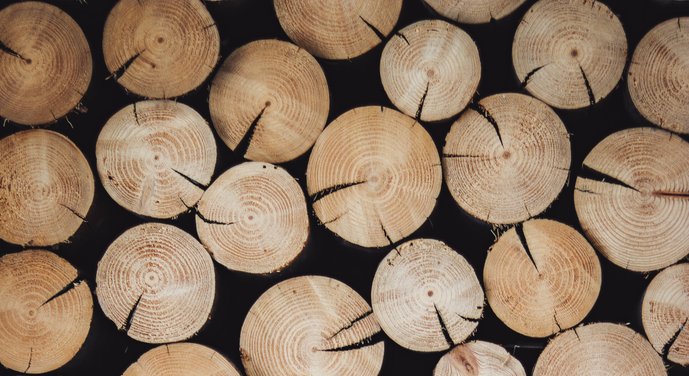Photo by Zuzana Kacerová on Unsplash
Impact & Outcomes of VEHICLE
On April 30th 2023 the VEHICLE project came to its end after the 4-year project duration.
The VEHICLE project achieved all its objectives:
- Successful demonstration of the valorisation of the low value sugar streams, with six demonstrators for the value chains of Biorefineries - Chemical company - Polymer producer – Converter - Brand owner
- Six new bio-based building blocks produced: MEG, MPG, diols, diacids, glucosone and fructose
- Five new bio-based materials produced: compostable bioplastics, bio-MEG, bio-MPG, non-food-based biopolymers and bio-based biodegradable polyesters
- Seven new bio-based consumer products created: Bio-PET for plastic bottles and bio-polyesters for films in packaging material; film for extrusion paper coating & thermoformed trays ; antifreeze / de-icing fluids for aircrafts; unsaturated polyesters for sheet moulding compounds, bulk moulding compound; heat transfer fluids for engine protection and for solar panels; new stabilizer for ASA emulsification
- Eight technologies were brought to a higher TRL level for closing the gaps in bio-based value chains
Below you can find the main outcomes of VEHICLE:
- Demonstrating valorisation of dilute hemicellulose-containing prehydrolysate streams from pulp mills, which are currently waste streams with little value: Ecohelix built the demo production unit at Domsjö mill and has started production. The Ecohelix LCC polymer has been delivered to Kemira. MetGen has successfully produced MetZyme® extremophilic laccases to Ecohelix for the detoxification of hemicellulose streams.
- Widening the business and market opportunities of existing biorefinery investments by demonstrating the applicability of their sugar streams in several downstream options: Sugar streams were provided by Avantium and Fibenol from their demonstration and flagship facilities. Avantium has shown that the Dawn sugars can be used as the feedstock for Ray TechnologyTM. Fibenol has scaled-up and optimized its process and purification steps for its sugar streams and validated the sugar streams with project partners Novamont and MetGen for their processes.
- Demonstrating the use of hemicellulose polymers from prehydrolysis streams in different pulp and paper product applications: Kemira has identified and studied the performance of the Ecohelix LCC polymer in varying paper and board applications. Kemira has identified the main applications areas of the Ecohelix LCC polymer, selected the most promising applications and successfully scaled up to pilot production.
- Demonstrating conversion of hemicellulose and cellulose based sugars into intermediate and building block chemicals – glycols, diols and diacids – as well as into specialty sugars (glucosone, fructose): Avantium has shown that the Dawn sugars can be used as the feedstock for Ray TechnologyTM. Novamont has demonstrated the 2G sugars from Fibenol for monomers production, with the Ecohelix process for purification. Ecohelix has demonstrated the production of mixed sugars from the Domsjö Fabriker raw material. MetGen has demonstrated pilot scale (batch) production of glucosone with full conversion using Fibenol C6 hydrolysate. Development of optimized SOP for batch production finalized and ready for technology transfer to demonstration scale.
-
Secure the market demand and marketability of the produced intermediate molecules by demonstrating their use in a minimum of 5 end applications: Novamont demonstrated the conversion of the obtained building blocks into optimized biodegradable polyesters and compostable bioplastics and validated their use by producing prototypes for different packaging applications, i.e., thermoformed trays, paper coated biopolymers enhancing the possible End-of-Life for such products (i.e. organic and/or paper recycling). Avantium demonstrated the use of the produced intermediate molecules in the end applications including various bioplastics (bio-PET for bottles, PEF containing plantMEGTM), ice protection formulations, heat transfer fluids for car engine protection, and heat transfer fluids for solar panels.
Finally, the expected impacts of VEHICLE are the following:
- Enable pulp mills to recover higher value and better sustainability for their existing capacity by valorising their hemicellulose-containing side (waste) streams that currently have no or low value-added use
- Enable 2G biorefining to guarantee a higher valorisation of its hemicellulose and cellulose based by-products in a broader spectrum of conversion routes into possible end products, thus increasing their business potential and decreasing risks
- Enable even >90% conversion of hemicellulose-based materials into end products, expanding the existing biorefining feedstock base significantly
- Demonstrate up to 9 value chains and 9 end-products, with standalone routes and in combinations towards the separate markets, with the market size for each main product group in the scale of billions of euros annually
- Demonstrate the end products in VEHICLE to answer to all key market requirements and be comparable to existing alternatives in terms of technical performance and costs. Furthermore, their sustainability is far superior compared to the fossil- or food-based conventional products, enabling significant growth opportunities for the partner companies and addressing the major societal challenge.
- Link tightly with several large-scale European projects, maximising the impacts of previous European investments

